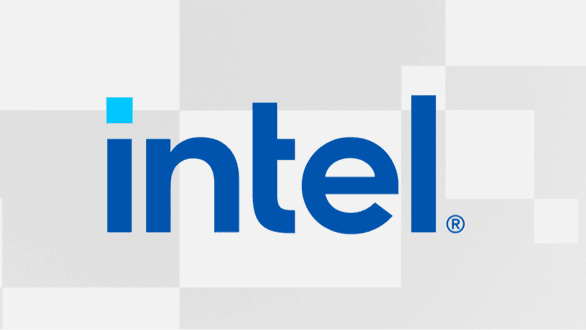- Local time
- 11:49 AM
- Posts
- 625
- OS
- Windows 7 SP 16 (or Windows 11 SP 2 or Sun Valley 2)
I posted the link for info. and because it includes a link to a program that checks for vulnerabilties.
The link indicates there were previously vulnerabilities, so it is not impossible ther may be others in future.
It is curious there is no real information about what it is for, just obfuscatory verbiage.
As far as I can make out, you have no choice about the firmware. You have it whether you want it or not (possible exceptions being purism )
However, as far as I can tell, the software is for some kind of remote management . I dont know why a normal consumer would need or want such a thing.
This: Intel® Converged Security and Management Engine Version Detection Tool (Intel® CSMEVDT) - will show you if the system is vulnerable.
You also have a public list with said vulnerabilities - and it's quite clear and detailed:

For example:
Summary:
Potential security vulnerabilities in the Intel® NUC Software Studio Service software may allow escalation of privilege, denial of service or information disclosure. Intel is not releasing updates to mitigate these potential vulnerabilities and has issued a product discontinuation notice for Intel® NUC Software Studio Service software.Vulnerability Details:
CVEID: CVE-2024-23197Description: Improper access control in the Intel® NUC Software Studio Service software for Windows may allow an authenticated user to potentially enable escalation of privilege via local access.
CVSS Base Score 3.1: 7.5 High
CVSS Vector 3.1: CVSS:3.1/AV:L/AC:H/PR:L/UI:R/S:C/C:H/I:H/A:H
CVSS Base Score 4.0: 5.4 Medium
CVSS Vector 4.0: CVSS:4.0/AV:L/AC:H/AT
CVEID: CVE-2024-34159
Description: Out of bounds write in the Intel® NUC Software Studio Service software for Windows may allow an authenticated user to potentially enable escalation of privilege via local access.
CVSS Base Score 3.1: 7.8 High
CVSS Vector 3.1: CVSS:3.1/AV:L/AC:H/PR:L/UI:N/S:C/C:H/I:H/A:H
CVSS Base Score 4.0: 7.3 High
CVSS Vector 4.0: CVSS:4.0/AV:L/AC:H/AT:N/PR:L/UI:N/VC:H/VI:H/VA:H/SC:N/SI:N/SA:N
CVEID: CVE-2024-23498
Description: Improper access control in the Intel® NUC Software Studio Service software for Windows may allow an authenticated user to potentially enable escalation of privilege via local access.
CVSS Base Score 3.1: 8.8 High
CVSS Vector 3.1: CVSS:3.1/AV:L/AC:L/PR:L/UI:N/S:C/C:H/I:H/A:H
CVSS Base Score 4.0: 8.5 High
CVSS Vector 4.0: CVSS:4.0/AV:L/AC:L/AT:N/PR:L/UI:N/VC:H/VI:H/VA:H/SC:N/SI:N/SA:N
CVEID: CVE-2024-36483
Description: Improper buffer restrictions in the Intel® NUC Software Studio Service software for Windows may allow an authenticated user to potentially enable denial of service via local access.
CVSS Base Score 3.1: 5.5 Medium
CVSS Vector 3.1: CVSS:3.1/AV:L/AC:L/PR:L/UI:N/S:U/C:N/I:N/A:H
CVSS Base Score 4.0: 5.7 Medium
CVSS Vector 4.0: CVSS:4.0/AV:L/AC:L/AT
CVEID: CVE-2024-36297
Description: Improper initialization in the Intel® NUC Software Studio Service software for Windows may allow an authenticated user to potentially enable information disclosure via local access.
CVSS Base Score 3.1: 4.7 Medium
CVSS Vector 3.1: CVSS:3.1/AV:L/AC:H/PR:L/UI:N/S:U/C:H/I:N/A:N
CVSS Base Score 4.0: 5.7 Medium
CVSS Vector 4.0: CVSS:4.0/AV:L/AC:H/AT:N/PR:L/UI:N/VC:H/VI:N/VA:N/SC:N/SI:N/SA:N
Affected Products:
Intel® NUC Software Studio Service software, all versions.Intel® NUC M15 Laptop Kits: LAPBC510, LAPBC710.
Intel® NUC P14E Laptop Element: CMCN1CC.
Recommendation:
Intel has issued a product discontinuation notice for Intel® NUC Software Studio Service software. As of March 30, 2024, the Intel® NUC Software Studio Service software is not supported with any additional functional, security, or other updates. Intel recommends that users of the Intel® NUC Software Studio Service software uninstall it or discontinue use as soon as possible.Product support for many NUC products has moved to ASUS. Technical and Warranty Support for Intel’s NUC 7 through NUC 13 Systems has transitioned to ASUS as of January 16, 2024. See the NUC Customer Support notice for more information.
Acknowledgements:
Intel would like to thank Aobo Wang of Chaitin Security Research Lab (CVE-2024-23197, CVE-2024-34159, CVE-2024-36297, CVE-2024-36483) and @sim0nsecurity (CVE-2024-23498) for reporting these issues.Intel, and nearly the entire technology industry, follows a disclosure practice called Coordinated Disclosure, under which a cybersecurity vulnerability is generally publicly disclosed only after mitigations are available.
My Computer
System One
-
- OS
- Windows 7 SP 16 (or Windows 11 SP 2 or Sun Valley 2)
- Computer type
- Laptop
- CPU
- Intel & AMD
- Memory
- SO-DIMM SK Hynix 15.8 GB Dual-Channel DDR4-2666 (2 x 8 GB) 1329MHz (19-19-19-43)
- Graphics Card(s)
- nVidia RTX 2060 6GB Mobile GPU (TU106M)
- Sound Card
- Onbord Realtek ALC1220
- Screen Resolution
- 1920 x 1080
- Hard Drives
- 1x Samsung PM981 NVMe PCIe M.2 512GB / 1x Seagate Expansion ST1000LM035 1TB









